We will review Buddhist Symbology and the 10 most popular Buddhist Symbols. We will explain their meanings and the legends surrounding them.
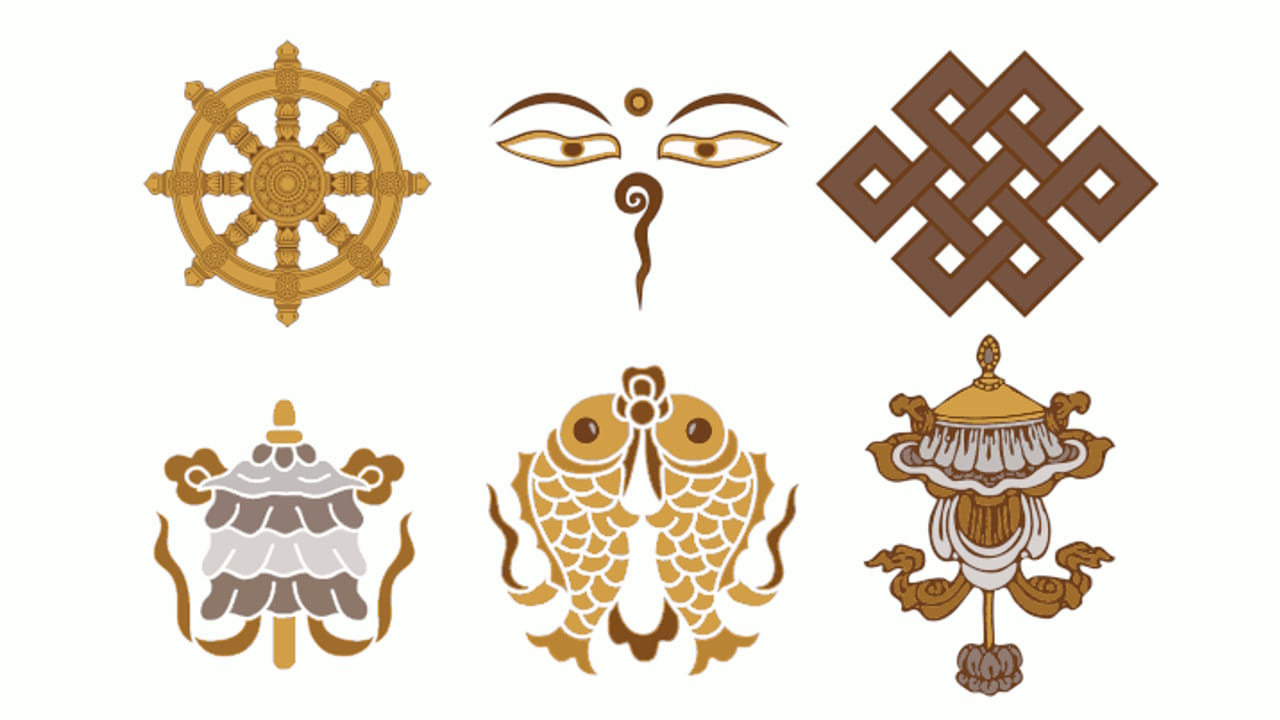
Buddhist Symbology
Throughout the centuries, mankind has used Buddhist symbolism to represent their faith and religious beliefs. And when it comes to symbolism, we can say that Buddhism is surely one of the major religions that have used it significantly.
In this post, we will examine Buddhist symbols and their meanings extensively to help you have a better understanding of them within the context of faith.
The most prominent Buddhist symbol is the Great Buddha, of course containing some minor symbols in itself, such as the three curved lines around his neck. This feature is believed to represent his deep, resonant voice.
Below are the 10 Auspicious Symbols of Buddhism, which originated in India and were used to represent coronations.
1. The Eight Auspicious Symbols – Ashtamangala
The group of 8 emblems is part of the Buddhist Symbology which is known in Sanskrit as “Ashtamangala”. Ashta means eight, and mangala means auspicious.
Each symbol in the group of eight is associated with the Buddha in his physical form. This group of symbols is one of the most popular of a series of intricate symbols.

When these symbols became part of Buddhism, they were meant to symbolize the offerings made to the Buddha by the other Buddhist gods after he became enlightened. Most schools of Buddhism use the Eight Auspicious Symbols of Buddhism visually, particularly in Tibet.
There are also a number of Chinese monasteries that display the symbols on lotus pedestals, which are placed directly in front of Buddha statues. They can be used both for decoration and to focus while meditating.
2. The parasol (umbrella)
The parasol is a prominent part of Buddhist Symbology with a double meaning behind it: it provides protection from the sun and is also a symbol of royalty. It is also believed to protect people from diseases.

The umbrella is a very ornate symbol, with a dome representing wisdom. The dome is surrounded by a skirt representing compassion.
In some cases, the dome can be seen as an octagonal, to show what is known as the Eightfold Path.
3. Two golden fish
Once a symbol of the Ganges and Yamuna rivers, the Two Golden Fish symbol became the symbol of good fortune for Buddhists, as well as Jains and Hindus.

As part of this Symbology, the Two golden fish also tells practitioners that all humans who follow the dharma need not fear that they will drown in the “ocean of suffering”, and that they can be reborn in the host of their choice.
4. The Conch Shell
Conch shell has been used as a symbol for thousands of years, long before it became a Buddhist symbol. It was used as a battle horn in Asia. For ancient Hindus, the white conch shell was a representation of the Brahmin caste.
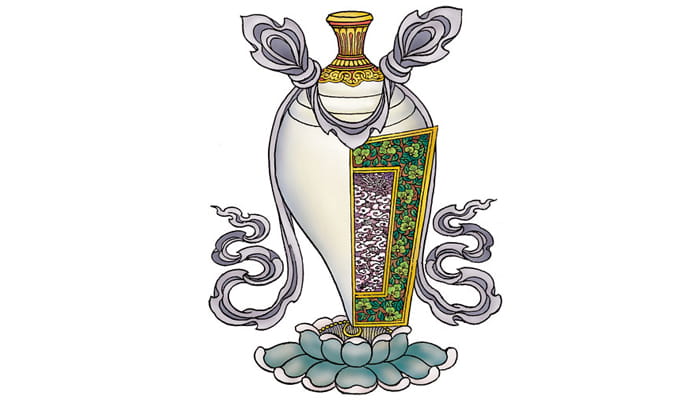
This Buddhist symbol, the Conch is also white and has a coil to the right. This is a representation of the sound of the reach of the Dharma, which is meant to make us see our ignorance and do something about it.
5. The lotus in the Buddhist Symbology
The lotus flower is beautiful, but its beauty hides a dark side, with roots growing deep in the mud beneath the water. But, from this mud comes a stem that produces the beautiful flower at the top.

The lotus flower is a symbol of our true nature, from our darkest places to the ultimate goal of enlightenment. The lotus flower is not only a very important Buddhist symbol in itself, but the different colors also have their own meaning.
For example, a white lotus is a symbol of mental and spiritual purity. Other colors and their meanings include:
- Red: this represents the heart, love and compassion.
- Pink: this represents the historical Buddha.
- Purple: this represents mysticism.
- Blue: this represents wisdom as well as sense control.6. The Flag of Victory
The Flag of Victory is a symbol of the Buddha’s victory over the demon Mara and what it represents (pride, lust, passion and fear of death), as well as the victory of wisdom over ignorance.

Legend has it that this victory flag was raised on Mount Meru by the Buddha himself, to symbolize his triumph.
7. The Vase
The Buddha’s teachings are infinite and abundant, represented in the Vase filled with sacred and precious treasures. It is believed that no matter how many treasures are removed, the Vase always remains full. The Vase is also a symbol of long life, as well as prosperity, because no matter how much is removed from it, it will never be empty.

8. The Wheel of Dharma at the Buddhist Symbology
The Wheel of Dharma, also known as the Dharma chakra and the Dhamma chakka, is probably one of the most iconic Buddhist symbols. To understand the Wheel of Dharma, one must understand that there are eight spokes, each representing the Eightfold Path.
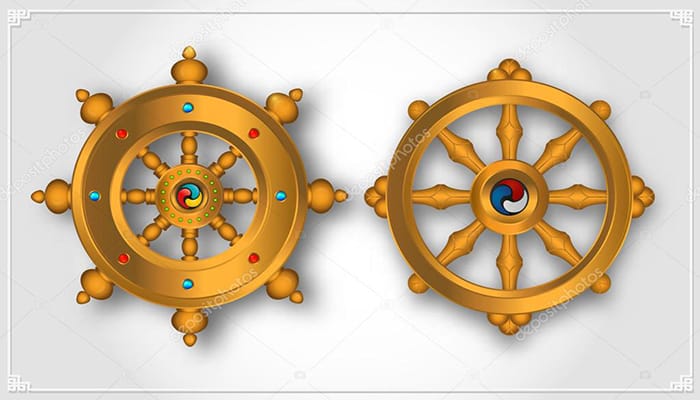
When Buddha offered his first sermon after his enlightenment, the Dharma Wheel turned. Twice more, when the Great Buddha taught on emptiness and Buddha nature, the wheel turned.
9. Buddhist Symbology and The eternal knot
The eternal knot is made with a single line or thread, which are intertwined in a closed pattern. This pattern represents the dependence of the origination and union of all phenomena.
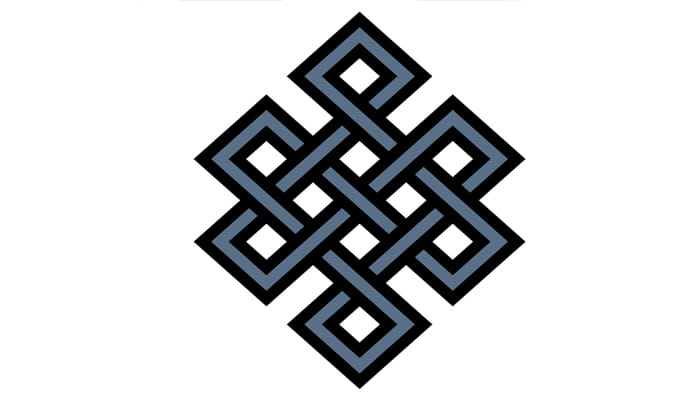
It can also be used as a symbol of the marriage of secular life and religious doctrine, as well as the marriage of wisdom and compassion. When one is enlightened, it can represent the marriage of charity and emptiness.
10. The Lion at Buddhist Symbology
In addition to The 8 Auspicious Symbols of Buddhism, there is one other symbol that we feel we should mention. The Lion, which is one of the most important Buddhist symbols, represents the royal past of the Buddha. It also represents the power of the Buddha’s teachings, as they are considered as powerful as the roar of a lion.


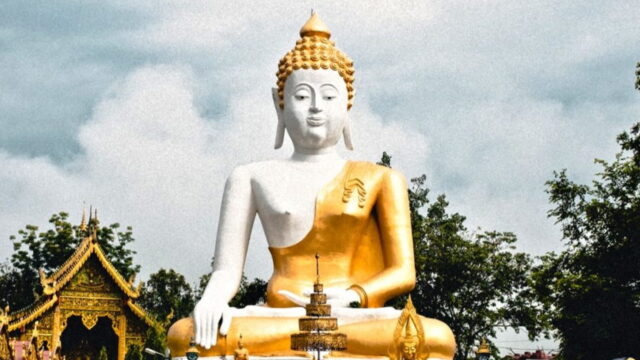
love symbols got one of my own
Nice 🙂